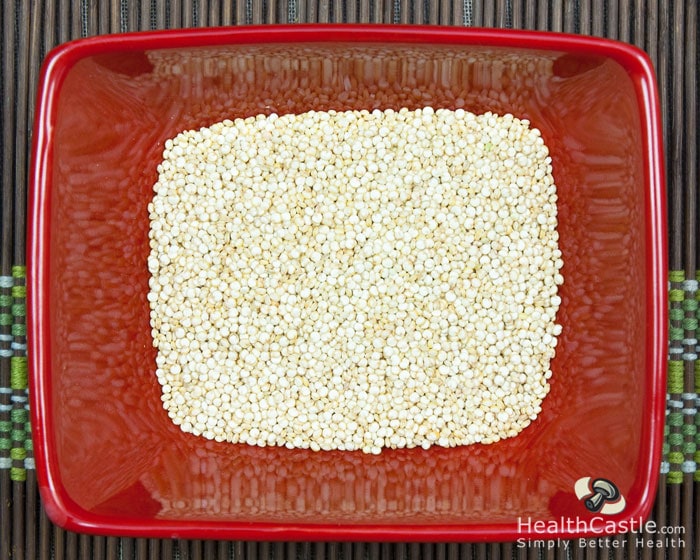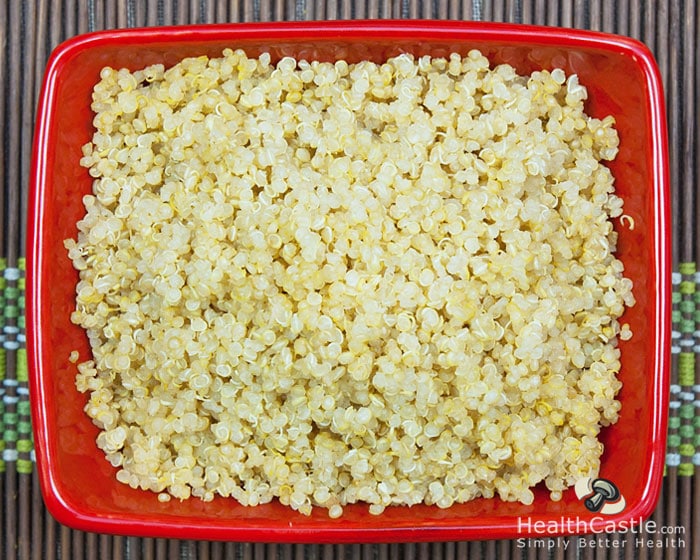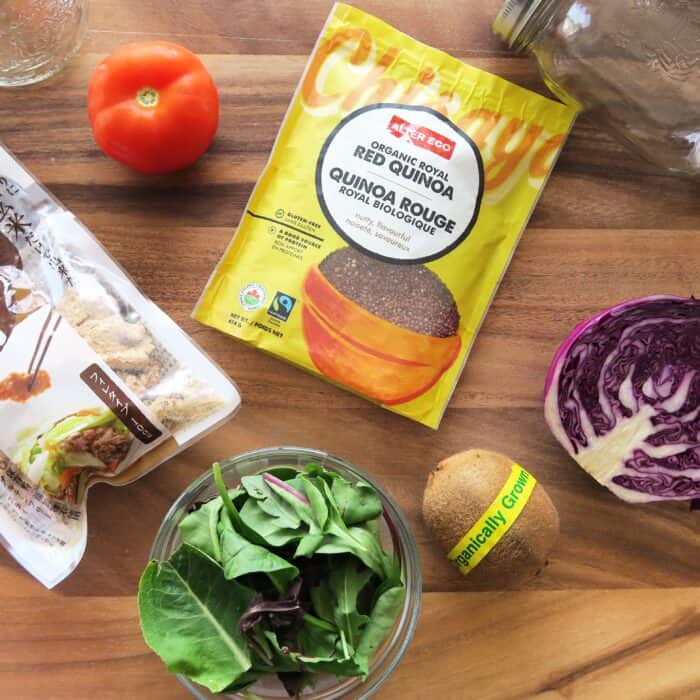
Written By: Sofia Layarda, MPH
Title: Master of Public Health
Alumni: University of California, Berkeley
Last Updated on:

By now you have heard of the numerous health benefits of quinoa. Despite being used in cooking and eating in the same way as most staple cereals, quinoa is considered a pseudo-grain instead of a “true” grain like wheat, because it is technically a broadleaf plant related to spinach and Swiss chard. Originally from South America, quinoa has a rich history as a crop dating back thousands of years and was so prized by the Incas that they referred to it as the “mother of all grains.”
While the seeds most familiar to us may be the pearly white ones, quinoa seeds actually come in many colors including red, brown, yellow, black or pink. Quinoa is sold in either prepackaged containers or bulk bins at the store. If you are buying from the bulk bins, make sure there is no evidence of moisture inside the container. As always, buy from a store with a good turnover rate.
Table of Contents


Quinoa is one of the few plant-based foods that provides complete protein, providing all 9 essential amino acids. It also offers a good source of non-heme iron, which can be challenging to reach in a vegan diet.

For some, red quinoa (and black quinoa too) offers an aesthetic appeal in a salad dish. Since the color is a lot darker, one may wonder if there are any nutritional differences among the 3 varieties.
In a nutshell, all 3 quinoa provides similar carbohydrates and calories. Red and black quinoa, however, seems to be slightly higher in fiber. In addition, black quinoa offers slightly more protein than red and white. However, the nutritional differences are not significant enough to warrant choosing one over the other.
Alumni: University of California, Berkeley – Sofia believes in bringing back fun and pleasure into everyday eating. She loves cooking, and is constantly experimenting with ingredients, creating recipes and trying them out on family and friends. Her latest interest lies in finding realistic and practical ways of environmentally-friendly food/eating habits.
gluten free, how to cook quinoa, quinoa nutritional fact